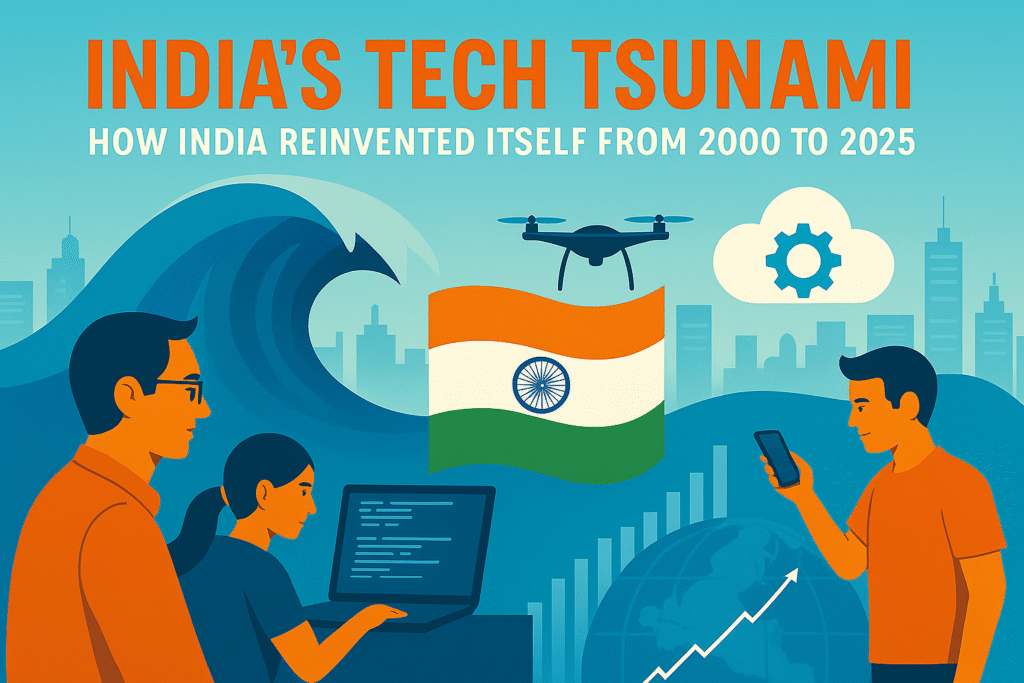
Imagine a bridge that opens like the wings of a mechanical bird—not just splitting in half like a drawbridge, but rising vertically to let ships glide through beneath it. And now imagine that bridge sitting in the middle of a choppy, coral-rich sea between mainland India and the sacred island of Rameswaram.
Rameswaram is not just another coastal town—it is a spiritual epicenter of Hinduism. As one of the four pilgrimage destinations in the Char Dham Yatra, Rameswaram holds mythological significance as the site where Lord Rama is believed to have built the Ram Setu (Adam’s Bridge) to reach Lanka and rescue Sita. The town is also home to the ancient Ramanathaswamy Temple, where Rama is said to have worshipped Lord Shiva after his victory in Lanka. Its blend of mythology, architecture, and spiritual magnetism draws lakhs of pilgrims every year.
So, when Prime Minister Narendra Modi chose to inaugurate the new Pamban Bridge on April 6, 2025—Ram Navami, the birthday of Lord Rama—it was not just a matter of convenience. It was a conscious act of symbolism: to launch a modern marvel on the very day celebrating a divine journey that once began in this very region.
Welcome to the New Pamban Bridge—India’s first vertical lift railway sea bridge and an extraordinary feat of engineering that could easily sit beside the world’s most iconic maritime structures.
On April 6, 2025, Prime Minister Narendra Modi officially inaugurated this next-generation bridge, replacing its century-old predecessor that had served as a lifeline to Rameswaram since 1914. With this, India entered an elite club of nations that operate vertical lift sea bridges. But this is more than just a rail project; it’s a story of heritage, resilience, and high-precision innovation.
Why This Bridge Matters So Much
India has plenty of impressive rail and road infrastructure, but the Pamban Bridge has always held a special place. Not only was the original bridge the first sea bridge in India, but for decades, it was also the only link between Rameswaram Island and the Indian mainland. For a town considered one of the holiest in Hinduism—believed to be where Lord Rama built the Ram Setu to reach Lanka—this bridge was both logistical and spiritual.
Over the years, the old Pamban bridge endured cyclones, salt corrosion, and increased traffic. It was sturdy but aging. Despite repairs, the iconic double-leaf bascule section, which opened up for marine traffic by manually lifting two heavy leaves, was increasingly becoming obsolete.
Thus, in 2019, the government decided: it was time for something bold.
Engineering Marvel: The Specs and Innovations
The New Pamban Bridge is not just a replacement; it’s a transformation.
- Length: 2.07 kilometers
- Type: Vertical lift railway sea bridge
- Material: Steel with advanced corrosion-resistant coatings
- Design life: 100 years
- Vertical Lift Span: 72.5 meters long
- Lifting height: 17 meters
- Lifting time: Approx. 5 minutes
- Train speed supported: Up to 80 km/h
- Cost: Around ₹550 crore
The most jaw-dropping part? The central lifting span. Controlled electronically, this massive steel slab can be lifted straight up, allowing ships and fishing vessels to pass underneath with zero risk.
The bridge has been designed to withstand cyclonic winds up to 180 km/h, and the materials used include stainless steel reinforcement bars, epoxy-coated structural steel, and seismic-resistant bearings. This isn’t just infrastructure; it’s a fortress.
Who Built the New Pamban Bridge?
The project was executed by Rail Vikas Nigam Limited (RVNL), a Navratna Public Sector Enterprise under the Ministry of Railways.
RVNL collaborated with Larsen & Toubro (L&T) and other subcontractors for civil, mechanical, and electrical works. The work involved complex marine construction, prefabricated components, and real-time monitoring tech.
Despite multiple challenges—from COVID-19 disruptions to monsoon slowdowns—RVNL and L&T managed to deliver a bridge that promises to serve until at least 2125.
What Makes It World-Class?
Compared to iconic sea bridges like:
- London’s Tower Bridge (UK) – Bascule design, over 120 years old.
- Pont Jacques Chaban-Delmas (France) – Modern vertical lift bridge in Bordeaux.
- Vanport Bridge (USA) – An older vertical lift bridge known for robust design.
…the New Pamban Bridge matches or exceeds them in modernity, automation, and storm resilience. Most of these bridges are for road traffic. The New Pamban is for railways, which introduces a different level of engineering difficulty.
Its closest cousin? The AshtaMedu Bridge in Croatia — but even that serves both rail and road, and lacks the heritage context that Pamban brings.
Strategic and Spiritual Significance
The New Pamban Bridge isn’t just about trains and steel. It’s a powerful symbol of how infrastructure meets identity:
- Spiritual Gateway: Rameswaram is part of the Char Dham pilgrimage. Every year, lakhs of devotees travel here. The new bridge ensures uninterrupted access.
- Border Proximity: Located just 30 km from Sri Lanka, this link strengthens logistical movement in a geopolitically sensitive zone.
- Fisheries and Economy: The old bridge used to delay boat traffic. The new vertical lift allows seamless sea transport and helps the fishing industry.
Local Challenges and Environmental Impact
This wasn’t a plug-and-play project.
The region is environmentally fragile—home to coral reefs, marine life, and unpredictable tides. Special environmental clearances were obtained, and construction methods were adapted to reduce marine pollution. Foundation piles were laid with underwater precision equipment to minimize ecological disruption.
Local fishermen were employed during certain phases to provide maritime insights. It was truly a case of development with dialogue.
What This Means for India
- Engineering Prowess: Pamban 2.0 is proof that India can lead in marine infrastructure.
- Make in India Push: Major components were manufactured domestically.
- Railways Modernization: It aligns with Indian Railways’ mission to modernize 100+ key bridges.
- Tourism Boost: Expect a spike in eco and spiritual tourism, especially with the Ram Mandir wave.
Final Thoughts: From Legacy to Leadership
The New Pamban Bridge is more than just steel and concrete. It’s a bridge between India’s past and its future. Between the spiritual and the strategic. Between old-world craftsmanship and next-gen innovation.
As the first train rolls across it—above the roaring sea, against a saffron sunset—India proves once again: when we build, we don’t just construct. We engineer legacies.
Sources
- Press Information Bureau (pib.gov.in)
- Indian Railways – Ministry of Railways (indianrailways.gov.in)
- Times of India – Business & Tamil Nadu Editions
- NDTV India and English Reports
- India Today Science Desk
- Economic Times Infrastructure Reports
- Rail Vikas Nigam Ltd. Project Briefs
- L&T Infrastructure Announcements
- Interviews with local residents (via The Hindu)
- Historical archives on 1914 Pamban Bridge (NCRTC/IR archives)
- Ramanathaswamy Temple and Char Dham pilgrimage references (Ministry of Culture, Govt. of India)


